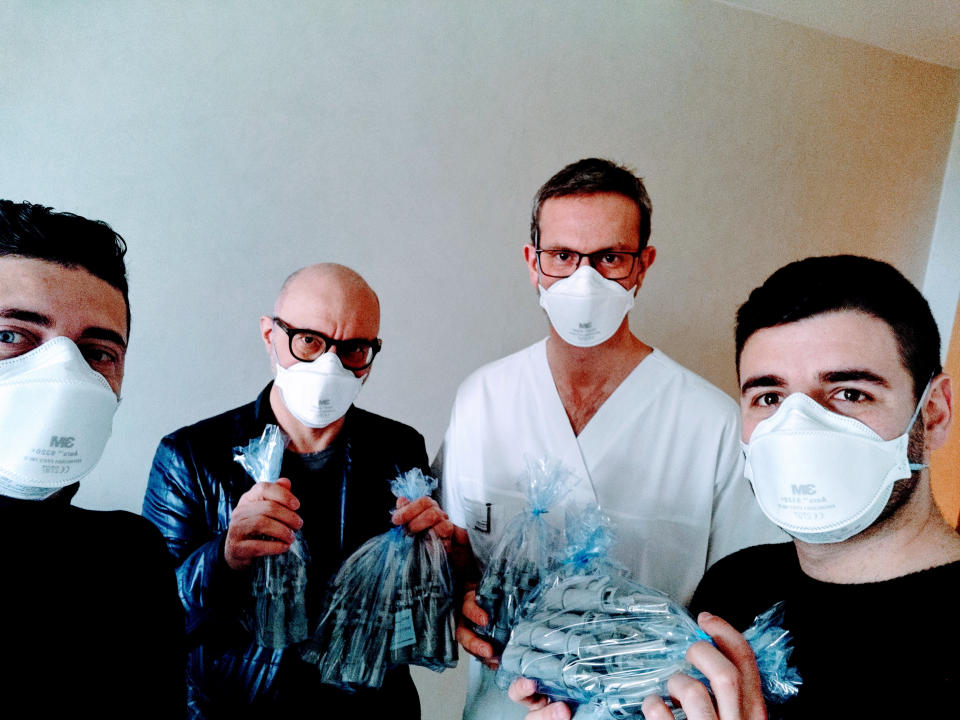From toilet paper to yeast, coronavirus pandemic inspires people to make their own supplies from scratch: 'Suddenly we're all homesteaders'

Supermarket shortages, delays in delivery from Amazon and a nationwide shutdown of nonessential businesses are forcing some in quarantine to make what they need at home.
“If there's no bread at the market and there's no toilet paper at the market, what can you do? We have to get up and do it ourselves,” says Dale Dougherty, founder of Make magazine and the creator of Maker Faire, which gathers DIYers from around the world into fairs that showcase invention, curiosity and hands-on learning.
“You can virtually learn how to do almost anything online today,” he says. “Recipes, instructions are available for doing all kinds of things.”
Online, it’s possible to find instructions on everything from making your own vinegar or yeast to making your own toilet paper (just be careful what you flush).
“Suddenly we’re all homesteaders,” he says.
Through Make magazine and Maker Faire, Dougherty has mobilized hundreds of thousands of doers, tinkerers and backyard builders into a vast community that shares, collaborates and celebrates making things from scratch.
Dougherty says it can be something as simple as creating what he calls a “virus victory garden” in your backyard or balcony.
He says making things at home is a simple way to just feel better during these high-anxiety times.
“It's actually something productive that people can do: making a better dinner at home, doing arts and crafts, drawing, being physical and doing stuff, [they’re] really important things.”
As parents and students adjust to the new normal of homeschooling in light of school closures due to the pandemic, Dougherty says it’s a perfect opportunity to find new ways of learning, through making.
“We are going to find new resources online, new experiments that, perhaps, are better than just broadcasting to 30 kids as a classroom,” he says. His organization has launched a free live stream series called Maker Camp, which encourages hands-on learning at home for kids and parents.
“It’s the ability to collaborate and connect, he says. “People are being extremely resourceful and they're smart! This is like a whole unleashing of energy and talent that I want the world to understand that it’s also a part of solving our problems.”
He points to many in the maker community who are posting DIY videos on YouTube featuring how to make face masks during the pandemic.
“It's not an N95 mask — it’s about 50 percent effective. But in some cases, it's better than nothing.”
Dougherty says he has also been speaking with doctors, scientists and engineers who have been building DIY versions of medical equipment that are on short supply.
“I was just on the phone with a guy who built a UV sanitizing grill,” he says.”It almost looks like a barbecue, but it has UV light in it that you put things on, face masks or cell phones or anything on it, and close it and then it sanitizes.”
He calls these medical coronavirus innovations “Plan C,” and says innovators are sharing their plans openly and freely to help anyone in the world might need them.
“We see doctors modifying the equipment and coming up with simple solutions for valves and other consumable things,” he says.
He points to engineers in Italy who have been 3-D printing respirator parts to keep coronavirus patients alive as well as a Canadian doctor who figured out how to split a ventilator so it can be used to treat two people instead of one. Gov. Andrew Cuomo is considering using this technology at hospitals in New York City. New York Presbyterian/Columbia University has already begun using the hack on their own ventilators, but it is considered risky by some.
“This is our talent and skills coming to meet the moment. Now the moment comes when you say, ‘Who's willing to step up? It's people that are clever and genius and stupid enough to try.”
Related Video: 5 Fruits and Vegetables That Can Stay Fresh for Months
For the latest coronavirus news and updates, follow along at https://news.yahoo.com/coronavirus. According to experts, people over 60 and those who are immunocompromised continue to be the most at risk. If you have questions, please reference the CDC and WHO’s resource guides.
How to maintain your physical and mental health during the pandemic
Taking care of a loved one with COVID-19? Here’s how to stay healthy
Q&A with Dr. Kavita Patel: How to keep your family safe and maintain your mental health
Read more from Yahoo Lifestyle
Want daily pop culture news delivered to your inbox? Sign up here for Yahoo Entertainment & Lifestyle's newsletter.



